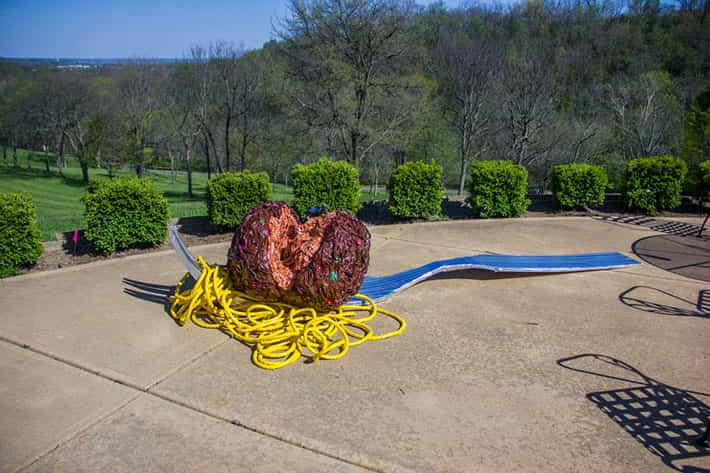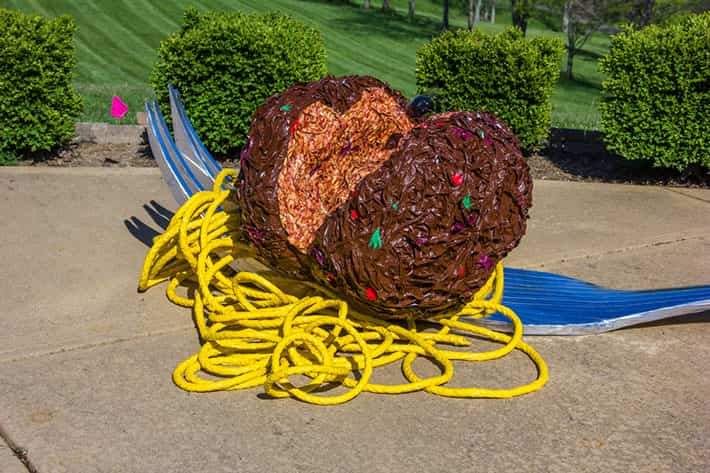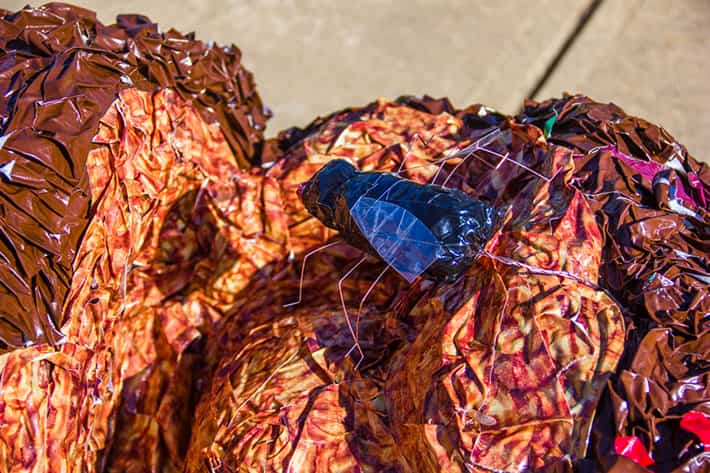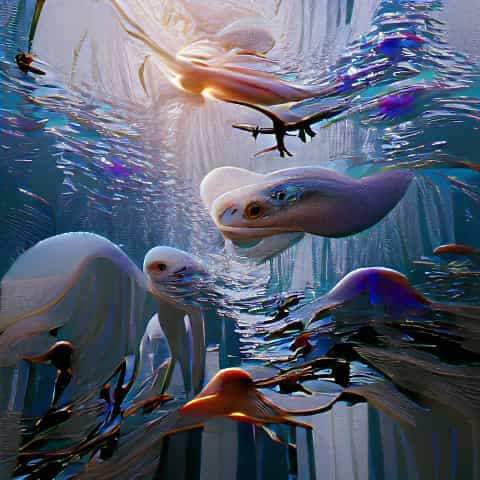#InConversation with Sayak Shome
By Davangi Pathak | Feb 20 2024 · 15 mins
Sayak Shome's artistic pursuits navigate the intersection of life and technology, aiming to comprehend, contextualise, reshape, dismantle, and envision varied modes of existence. Engaging in a dialectical dance between the intellectual and the sensory realms, his work unfolds on the tangible stage, gracefully treads the virtual tightrope of reality, and embraces the harmonious coexistence of both domains. Through this interaction we will dig deep into Sayak’s journey and how he utilises elements of playfulness, satire, and reimagined linguistic frontiers. Shome's creations illuminate tautological syndromes, introducing elements of the uncanny and the absurd to scrutinise their impact on the vibrancy of existence.






Fork Spaghetti Meatball w Fly, Collaboration with Harry Sanchez Jr., Siri Langone; Duct tape sculpture, total space 7ft by 4ft by 2.5ft (approx), 2016
Davangi: Like you mentioned you began your career as an engineer, which was by default a career option. However, did you want to be an artist since your earlier days or that inclination started post moving outside your town to Kolkata?
Sayak: Honestly speaking, I've never pursued a career as an engineer, despite holding a degree in the field. However, I draw upon my engineering and scientific knowledge in my artistic endeavours. While I was initially intrigued by the idea of pursuing art education, I lacked examples and guidance on how to navigate that path, especially with the prevailing stereotype of the struggling artist. Consequently, I opted for the conventional route, uncertain of where it would lead me. It ultimately led me to art.
Davangi: Moving from a small town to Kolkata brought new things in your life. How was that experience? Please tell what were the factors that shaped your vision to pursue art.
Sayak: Upon my arrival in Kolkata, I gained access to high-speed internet and a diverse array of art forms and fellow artists. Engaging with films became a means to access knowledge and study art materials, fueling my own artistic endeavours. Additionally, I had the opportunity to connect with numerous mentors and creative collaborators.
Davangi: After completing your engineering you started working with the Documentary Filmmakers. How was that experience and how did it help to shape your art style? To what extent your experience in filmmaking influences your practice?
Sayak: By the time I completed my engineering studies, I had already delved deeply into writing, produced several of my own films, and created various forms of physical and digital art using the technology accessible to me at the time. As I began collaborating with filmmakers and artists, my objectives shifted towards exploring the realms of filmmaking and art, and contemplating the potential career paths within these fields. This experience provided valuable insight into the practical and less glamorous aspects of artistic creation. While I identify as a filmmaker, I also express myself through various other mediums.
Davangi: You are a self taught art practitioner, who never received any formal education on art. How was that journey? From where did you start? How did space & time help you to better understand art and how it further helped you to apply in your practice?
Sayak: It wouldn't be entirely accurate to label myself as solely a self-taught art practitioner. I consider myself fortunate to have grown up in an environment where art permeated my surroundings, thanks to my parents' interests and my own exploration of its diverse forms. While I've independently acquired numerous skills and shaped my educational path in the arts to a certain extent, I also underwent formal education during my pursuit of a Master's degree in Fine Arts. In my view, all learning ultimately stems from self-directed efforts. Formal education, however, provides access to a curated selection of study materials, mentors for guidance, and peers for collaboration — although these elements can also be found outside of institutional settings. As long as one remains receptive to learning from these interactions, I believe it's entirely feasible to develop one's own artistic abilities and comprehension.
Davangi: Your 3D practice was initially involved using Lasers. Why did you choose to start working with lasers and not any other mediums? Please tell us more about your objective of “Experimenting & Expressing things''.
Sayak: I would like to clarify that I did not start my 3D practice using lasers, although thinking about it, in a very crude sense I was using lasers all along, in that, the whole act of observation
transmission to expression is not unlike lasers that can define points coherently. It was
during my Masters studies that I started incorporating sensors and electronics into my
sculptural/installation/new-media work and started exploring creative coding. I saw how
technology is intrinsic to contemporary life and how I may be able to understand that by
interacting with machines and making some of my own machines.
Davangi: COVID happened when you were thinking of expanding your practice. You were limited to space. COVID certainly played a significant role in transforming your practice. Please share some insights and tell us more about it?
Sayak: It was challenging to relinquish the physical expanse for idea exploration, yet I came to recognize that the digital realm also offers ample room for experimentation, learning, and creation. Thus, my studio transformed back into my machines, with my computer, tablet, or smartphone becoming my workspace, enabling me to create anywhere within the confines of my home. Additionally, the COVID-19 pandemic underscored the stark reality that the notion of work-life balance is often elusive; life itself is arduous work, and work, in turn, encompasses the challenges of life.
Davangi: In our earlier conversation you mentioned in the digital world, certain aura & craftsmanship in it that provides it value is missing. What does that mean? Could you please shed some light.
Sayak: The digital touch, by its very nature of omnipresence and mundanity, often feels impersonal. Unlike physical artwork, digital pieces lack tangible presence; they do not occupy physical space nor offer the illusion of touch. Digital art constantly adapts to spatial constraints, whereas physical art requires dedicated space for display. While the approach to digital art differs from that of physical art, the distinction isn't absolute. However, we still lack adequate means of viewing and comprehending digital art, much like we approach traditional art. Could digital artwork not possess the same impactful qualities as physical pieces? I believe the craftsmanship, time, and skill required for digital art creation are no less significant, yet we tend to apply outdated metrics in assessing its aura and economic value. Materiality does not equate to physicality.
Davangi: Would you like to tell us about any future projects? What New media will you be experimenting with?
Sayak: I am currently working on multiple projects, which will come to fruition over this year. I am keen on exploring various new-media tools to aid me in producing art objects, experiences
and ghosts.
Click here to view Sayak's Online Viewing Room and learn more about his practice.


